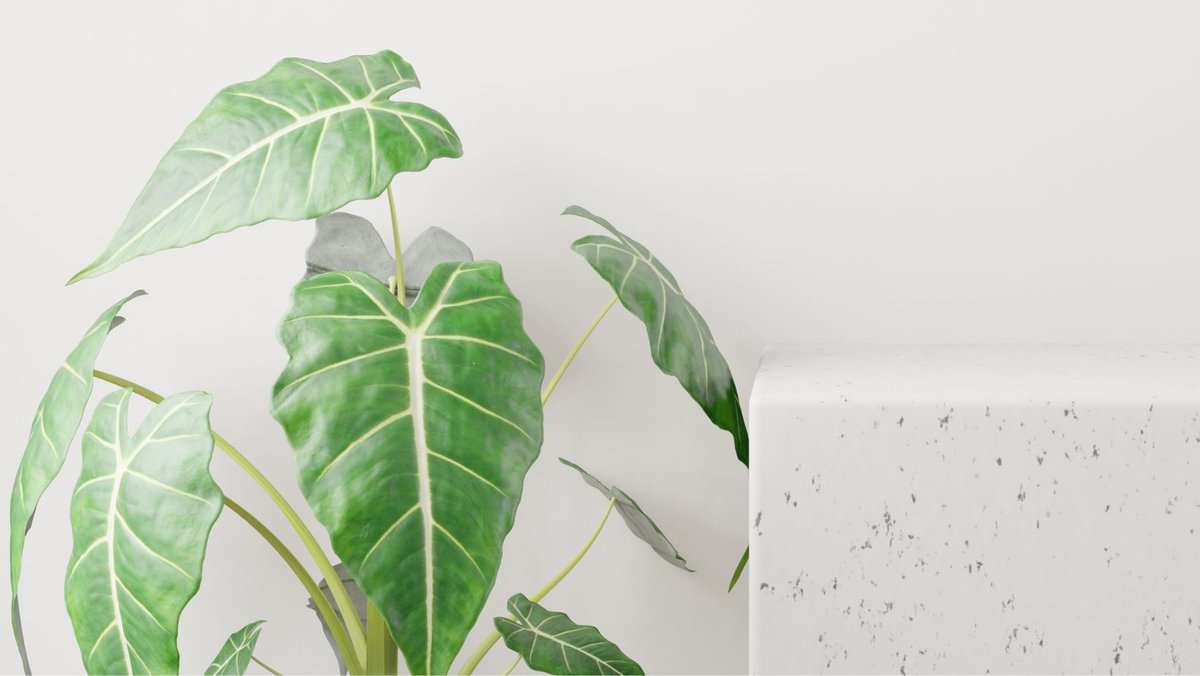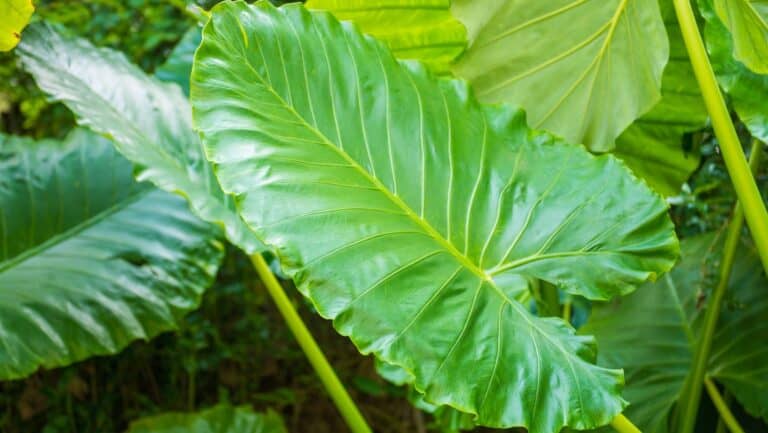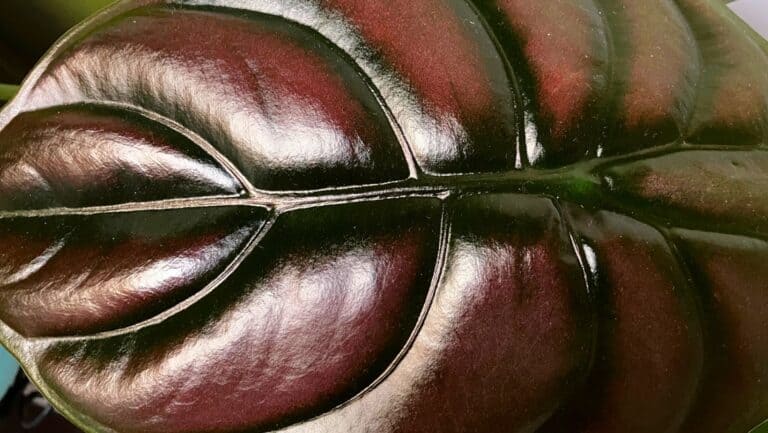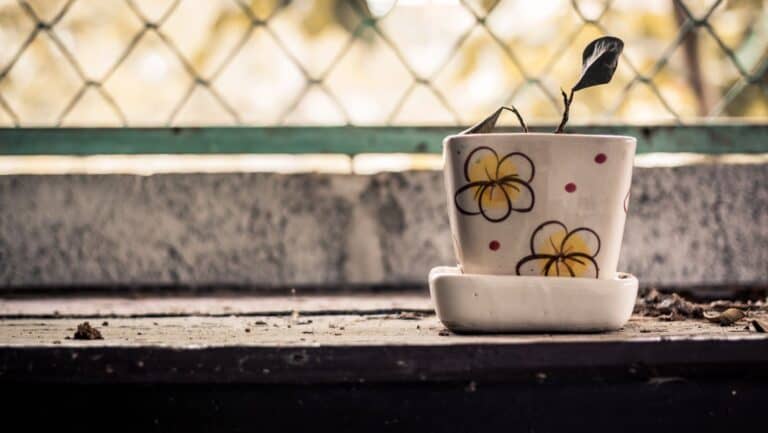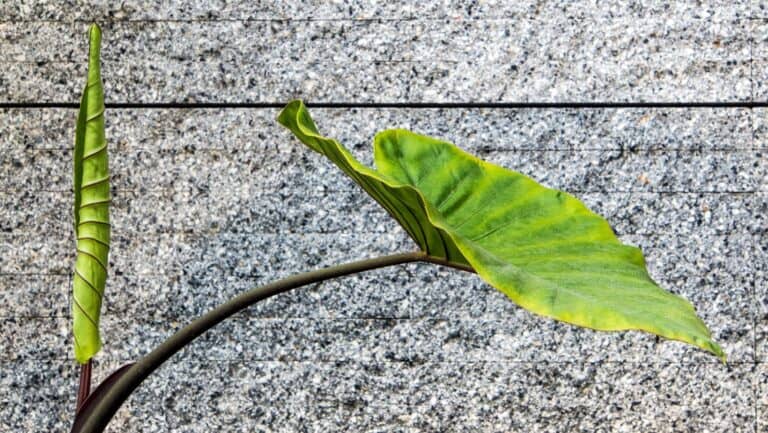Do Alocasia Like Sun or Shade?
The best care for your Alocasia plant should, of course, include responding to her lighting requirements. If we Google the question, however, we see somewhat incoherent advice. Some say that Elephant Ears like full sun, others suggest that Alocasia plants thrive in ‘bright indirect light’ (what that even is in the context of your apartment?).
In this article, we dig deeper into the subject and present some valuable science-based insights on ideal sun exposure for Alocasia plants.
In short, there are about 100 accepted Alocasia species, so there is no one-size-fits-all. With some exceptions, bigger Alocasia naturally grow in open sites and enjoy full sun. These are the varieties you might want to plant outdoors, if you are a happy dweller of warmer latitudes, or at least leave outdoors during the summer. Smaller Alocasia species are generally found within forests under a more or less dense canopy. They don’t like to be exposed to the sun and may suffer sunburns. Some even prefer heavy shade (like Alocasia Infernalis).
Different Alocasia – Different Needs
According to the latest studies, there are over 100 accepted species of Alocasia. And many more are awaiting description. They vary in size from miniature 20 cm (8 in) to impressive 6 meters (almost 20 ft). Their leaves vary in size, shape, texture, and color.
So, can we generalize and say that ALL Alocasia plants like sun or shade? No, we cannot. Their sun exposure preferences differ depending on the species. But don’t worry, there are some general principles that help you define what is best for your plant.
The rule of thumb is that bigger Alocasia species usually grow in open sites, like the gap phase of forests, landslips, river banks, open swamps, road-sides, and plantations. Such is the case of Alocasia robusta, A. sarawakensis (nicknamed ‘Yucatan Princess’), A. alba, A. puber.
Smaller species are generally found within forests under more or less dense canopy, and therefore support (and enjoy) lower light. Some beauties, such as A. suhirmaniana, A. infernalis, or A. chai clearly prefer shady spots. The universally loved Alocasia Sanderiana, when in the wild, grows in damp ravines (and thus is naturally protected from excessive sun exposure).
On the other hand, there are some exceptions too. For example, A. nycteris (the ‘bat Alocasia’) can grow to 150 cm/ 4 ft 11 in height but still prefers shaded places.
Where to Plant Your Alocasia Outdoors?
With their lush foliage, many Alocasia species have been cultivated outside of their home territories for decades. And some of those exotic beauties got more or less established as members of local flora in many parts of the world. And some of them adapt pretty well to different climatic conditions and habitat types. So well indeed, that they can turn into invasive weeds.
Once established, Alocasia macrorrhizos appears to tolerate a wide range of condition variability (drought, periodic flooding, variable light intensity, and occasional hard freezes) and interspecific interference.
Serviss BE, McDaniel ST, Bryson CT (2000) Occurrence, distribution, and ecology of Alocasia, Caladium, Colocasia, and Xanthosoma (Araceae) in the southeastern United States.
Apparently, what stops those warrior princesses from conquering more territories is the absence of natural pollinators. In our climates they can only reproduce vegetatively – by growing new shoots from the same underground rhizomes. And it takes time and favorable soil conditions to spread that way. But don’t underestimate their hardiness.
If you are tempted by the idea to introduce some gorgeous leaves in your garden or back yard, you are probably thinking about Alocasia macrorrhizos, Alocasia sarawakensis or Alocasia odora. Those mighty plants are quite sturdy.
So, if you live in a hardiness zone 8 to 10, where these beauties can perfectly survive and thrive without any assistance, don’t make fuss about them. Sun or shade, most of the time they will adapt beautifully to whatever conditions you offer.
In colder climates, they will go dormant in winter up to losing all their leaves and further north you might need to take your plant home for the colder months or dig out the rhizome to save it from freezing and re-plant it the following year.
Where to Place Your Alocasia at Home?
Now, what about Alocasia that live indoors? When you buy one of those exotic beauties in a pot, the usual care tip concerning lighting is ‘bright indirect light’.
But what on earth does it mean? Is my white tiled bathroom with its small window sufficiently bright? Is the spot near my west-facing window on the 6th floor sufficiently indirect? Which spot in your home can mimic lowland rain forest understorey that your Alocasia or, at least, her wild grandparents, are used to?
To answer those questions you need to have a long talk with your plant. Because she will speak for herself. First of all, she will literally extend her stems (petioles) to get her leaves closer to the light source, so to achieve a less leggy and more compact look, you will want to give her more light.
Also, if you don’t use grow lights, your plants will naturally react to seasonal changes in lighting conditions. A spot that provided enough light for your Alocasia in spring and summer will probably fail to do so in winter.
Here again, listen to your plant. If she is looking tired, leaves facing down, lower leaves getting yellow, it might mean that she decided to take a nap (aka go dormant). That is not necessary for the species, but when the conditions are suboptimal, the plant prefers not to waste her energy on growing or keeping those leaves, and turns on the ‘eco mode’, sometimes by reducing herself to a bare rhizome!
That is not necessarily fatal. Read more in this article.
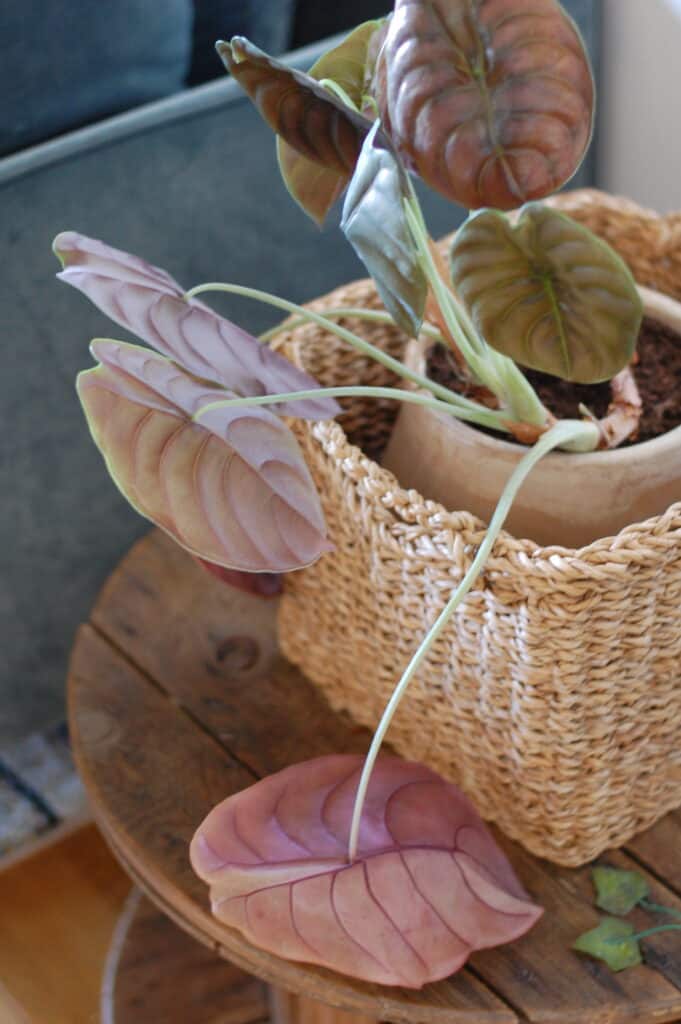
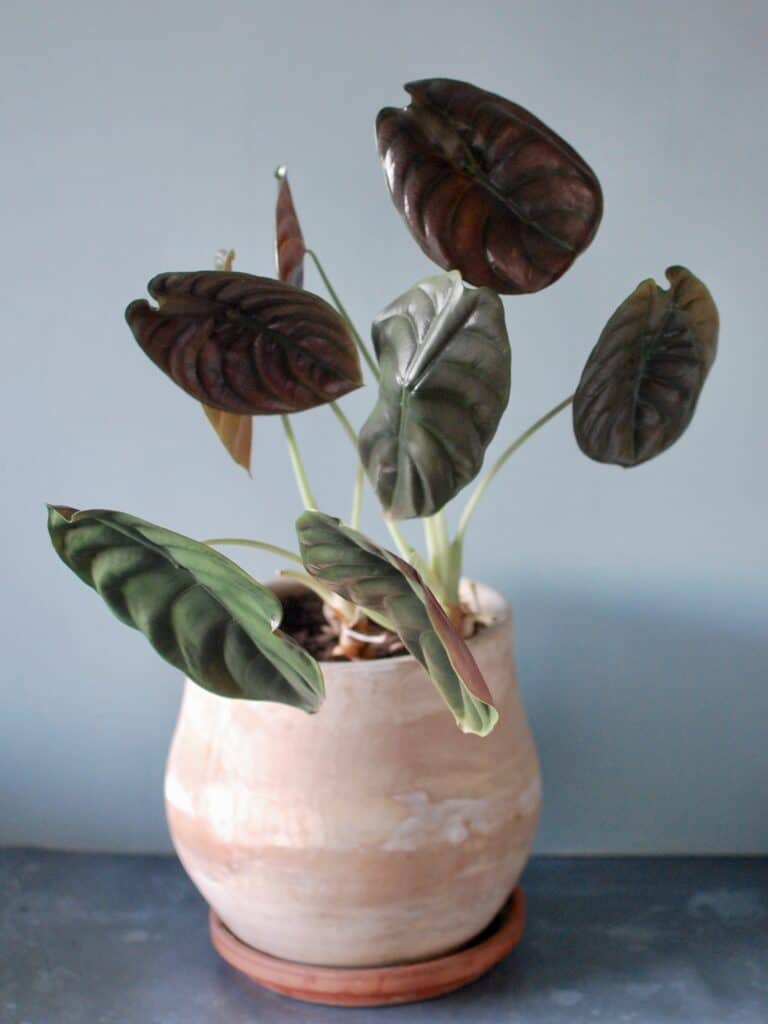
If you don’t want her to go dormant, improve her conditions, for example move her closer to the window while the days are shorter. On the other hand, that same spot on the window sill that keeps her awake in winter, might be too sunny and too hot in summer. Beware of leaf burns and if you see those brown spots on the leaves (or you see them coming), get your plant further away from the damaging sun radiation.
My personal tip here is that if I feel like putting on sunglasses when sitting in that spot, it is too bright for my Alocasia. A good place for my plants is where I can comfortably read a book with glossy white pages.
The bottomline is there is no one ideal placement for your Alocasia. Some of them don’t mind shade. But shade under a tropical forest canopy is likely not as shady as a back corner of your living room. Observe your plant and you will certainly find a place where she is happy and in harmony with your decor.
SOURCES:
- Serviss BE, McDaniel ST, Bryson CT (2000) Occurrence, distribution, and ecology of Alocasia, Caladium, Colocasia, and Xanthosoma (Araceae) in the southeastern United States. SIDA, Contrib to Bot 19:149–174.
- Boyce, Peter. (2007). Studies on the Alocasia Schott (Araceae-Colocasieae) of Borneo: I Two new species from Sarawak, Malaysian Borneo. Gardens’ Bulletin Singapore. 58. 141-154.
- Burnett, D. 1984. The cultivated Alocasia. Aroideana. 7: 67-163.
- Medecilo, Melanie P, Yao, George C., Madulid, Domingo A. (2007). A New Species of Alocasia (Araceae: Colocasieae) from Panay Island, Phillippines. in Journal of the Botanical Research Institute of Texas, vol. 1, 815–818.
- Hay, A. (1999). The genus Alocasia (Araceae-Colocasieae) in the Philippines. Gardens’ Bulletin, Singapore, 51(1), 1–41.

